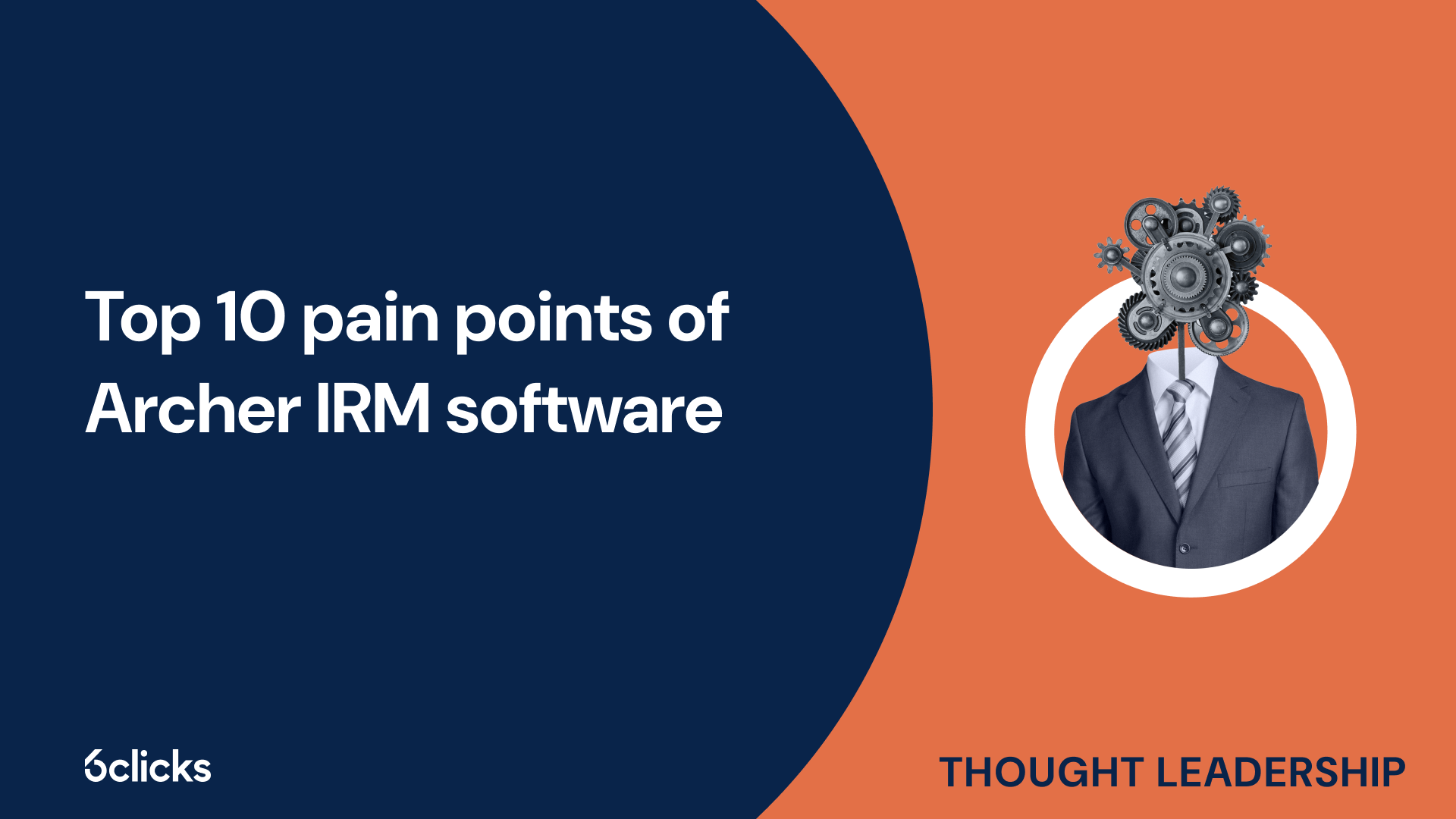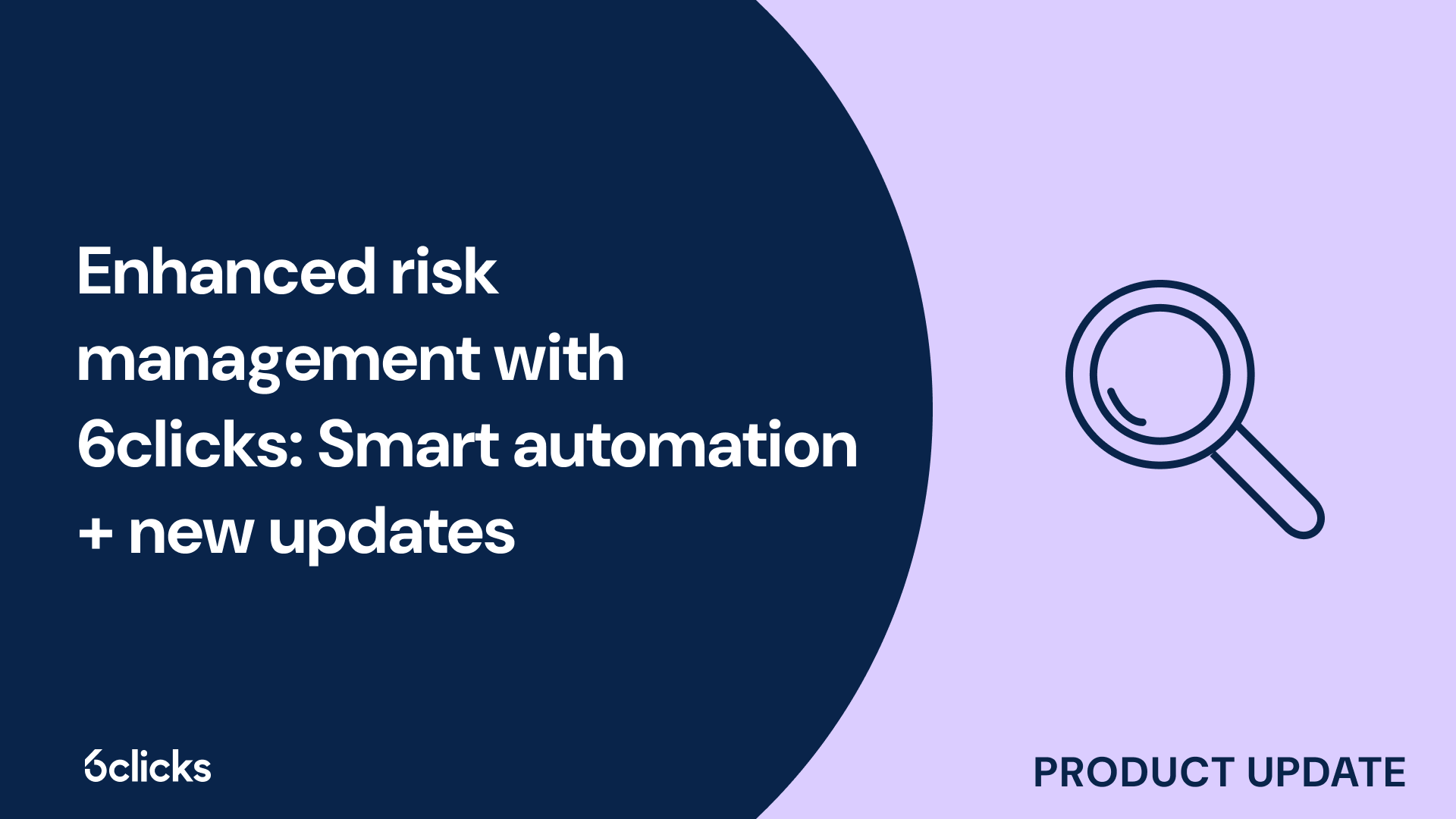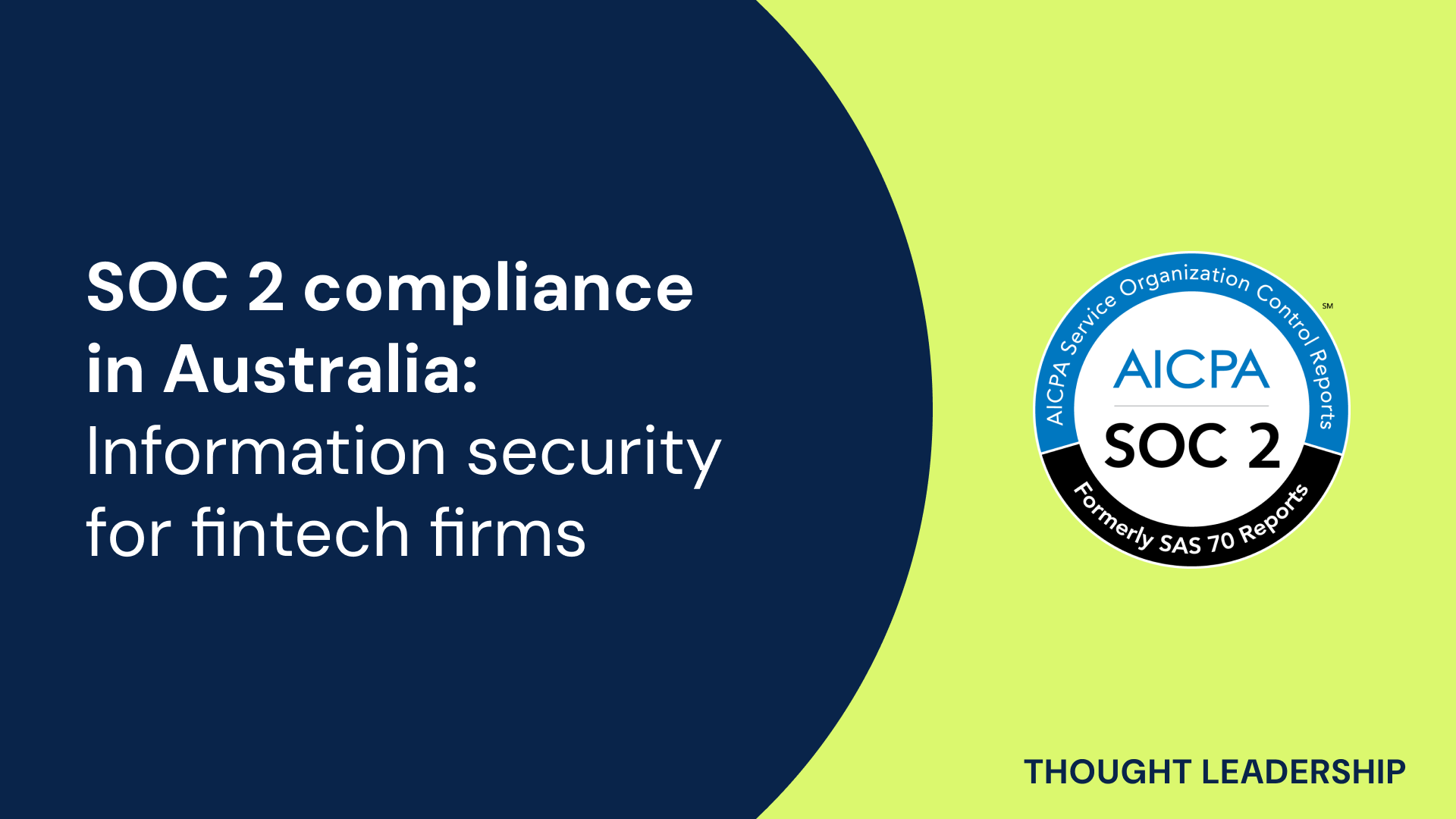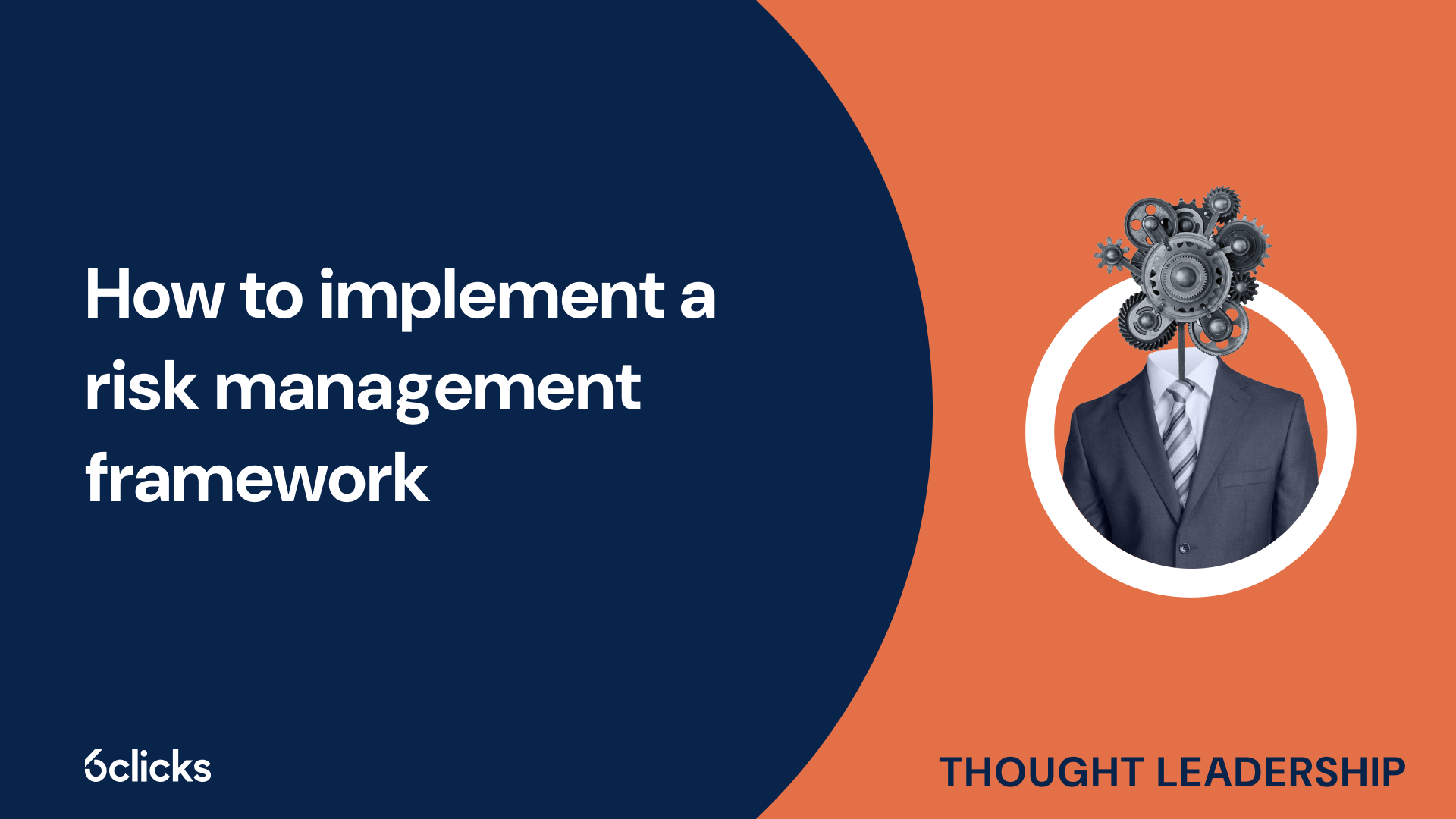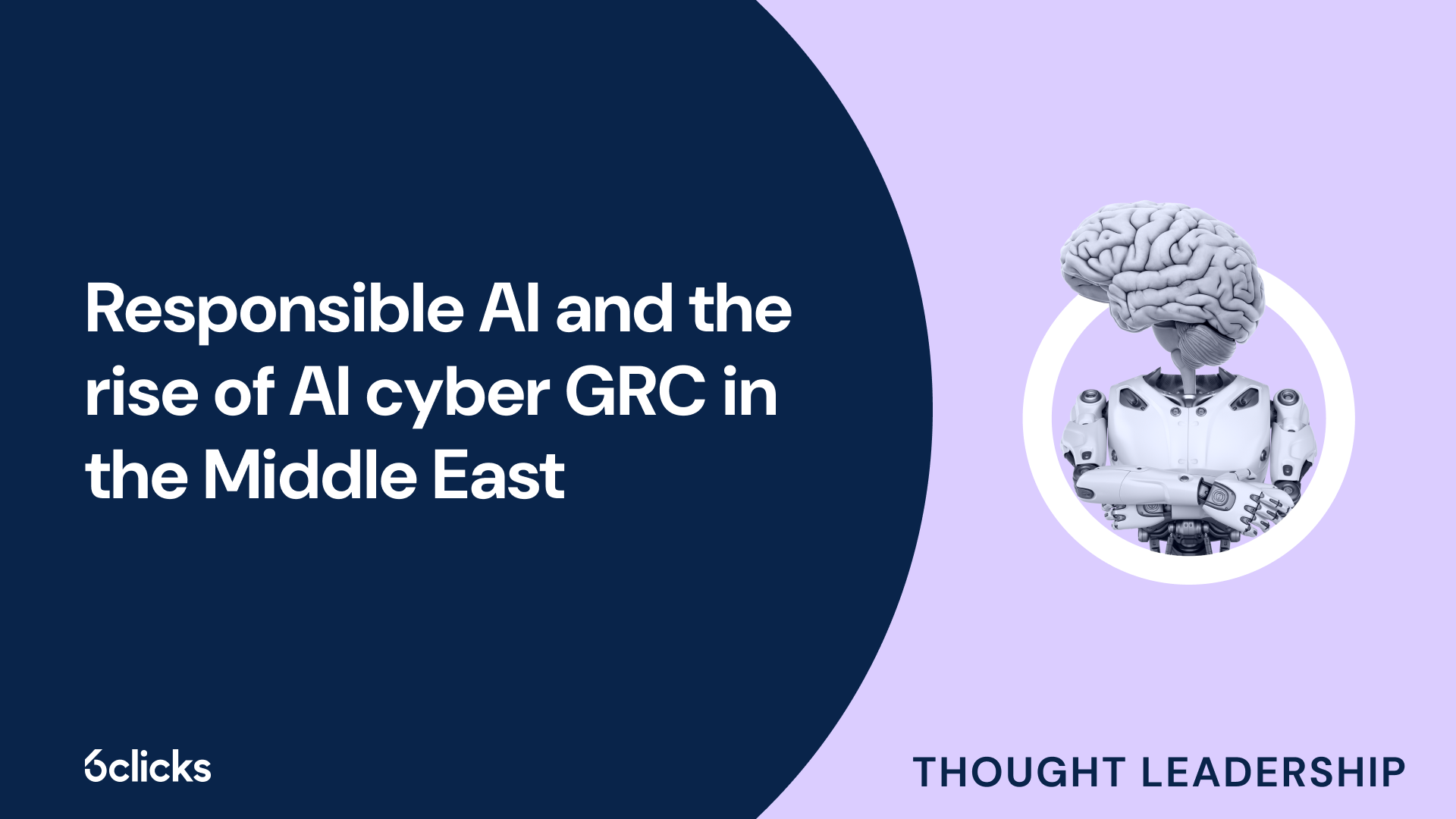The GRC buyer’s guide for 2025: Building resilience with AI-powered, federated solutions
Discover the ultimate GRC buyer's guide for 2025! Uncover how AI-powered, federated solutions transform compliance and security management for industries like government, aerospace, banking, and more. Learn about centralized control, continuous compliance, and advanced cyber GRC capabilities. Download now!
-1.png?width=200&height=249&name=Group%20193%20(1)-1.png)
The GRC buyer’s guide for 2025: Building resilience with AI-powered, federated solutions
Definition of information security
Information security is a critical aspect of protecting both personal and organizational data from unauthorized access, disclosure, and disruption. With the growing threat of cyber attacks and the increasing reliance on digital technologies, it has become essential to establish robust information security measures. Information security encompasses various strategies and processes designed to mitigate risks and safeguard sensitive information. In this article, we will explore four types of information security: network security, application security, endpoint security, and data security. Each of these types plays a crucial role in protecting valuable assets and ensuring the confidentiality, integrity, and availability of information. By implementing these types of information security measures, individuals and organizations can effectively combat the ever-evolving threat landscape surrounding unauthorized access and cyber threats.
Overview of types of information security
Information security is an essential aspect of protecting valuable assets and data from unauthorized access, cyber threats, and malicious activities. There are four primary types of information security that organizations implement to safeguard their digital resources.
- Application security focuses on securing software applications from potential threats and vulnerabilities. It involves the implementation of security measures such as authentication, encryption, and secure coding practices to prevent unauthorized access, injection attacks, and malware infections.
- Cloud security involves securing data and applications that are stored and accessed in cloud environments. It includes measures such as data encryption, access controls, and regular security audits to protect against data breaches, unauthorized access, and other cloud-related risks.
- Identity and Access Management (IAM) is concerned with managing access to systems, resources, and data. IAM ensures that only authorized individuals have access to specific information and resources, reducing the risk of unauthorized access and data breaches. It includes practices such as multi-factor authentication, strong passwords, and access controls.
- Network security focuses on securing computer networks from potential threats and malicious activities. It involves implementing firewalls, intrusion detection systems, and security monitoring tools to protect against network breaches, suspicious activities, and unauthorized access to network resources.
By implementing a combination of application security, cloud security, IAM, and network security measures, organizations can enhance their overall information security posture and minimize the risk of cybersecurity incidents.
Type 1: unauthorized access
Unauthorized access refers to the act of gaining access to data or resources without proper authorization. It is a common method used by cybercriminals to breach security defenses and exploit valuable assets. Unauthorized access can occur in various forms, such as hacking into systems, bypassing login credentials, or exploiting vulnerabilities in software or networks. To mitigate the risk of unauthorized access, organizations implement various security measures, such as strong passwords, access controls, and multi-factor authentication. Additionally, regular security audits and monitoring are conducted to detect and prevent any unauthorized access attempts promptly. By prioritizing unauthorized access prevention, businesses can ensure the confidentiality, integrity, and availability of their data and protect against potential threats.
Definition and examples
Unauthorized access is a type of information security breach where an individual or entity gains access to a system, network, or data without permission. It refers to unauthorized entry into a digital space or resource with the intention of viewing, stealing, altering, or deleting information. Unauthorized access poses a significant threat to the confidentiality, integrity, and availability of sensitive data and can lead to severe consequences for organizations and individuals alike.
Examples of Unauthorized Access:
- Hacking: A common method of unauthorized access, hacking involves exploiting vulnerabilities in systems or networks to gain unauthorized access. Hackers use various techniques, such as SQL injection attacks, brute force attacks, and social engineering, to bypass security measures and gain entry into protected environments.
- Insider Threats: Unauthorized access can also come from individuals within an organization who misuse their access privileges. This can include employees intentionally or accidentally accessing confidential information without proper authorization, compromising the security of data and systems.
- Phishing Attacks: Phishing scams involve tricking individuals into revealing sensitive information, such as login credentials, by posing as a legitimate entity. These tactics grant unauthorized access to personal or organizational accounts, allowing cybercriminals to exploit data and carry out malicious activities.
- Remote Access Breaches: Allowances for remote access to networks and systems can introduce the risk of unauthorized access if not properly secured. For example, if a legitimate user's credentials are compromised or stolen, an attacker can use them to gain unauthorized access to the network or system.
By adhering to established information security standards, such as those developed by the National Institute of Standards and Technology (NIST), organizations can effectively categorize and mitigate the risk of unauthorized access. These standards provide guidelines and best practices for securing information, ensuring that appropriate controls and measures are in place to prevent unauthorized access and protect valuable assets.
Prevention strategies
Prevention strategies play a crucial role in safeguarding information systems and reducing the risk of cybersecurity incidents. By implementing preventive controls, organizations can proactively identify and address vulnerabilities within their systems, making it harder for malicious actors to gain unauthorized access or exploit weaknesses.
One effective preventive measure is the use of deterrent techniques. These techniques create a visible and robust security presence, dissuading potential attackers and reducing the likelihood of breaches. Examples of deterrent techniques include implementing strong access controls, using video surveillance, and displaying warning signs about the consequences of unauthorized access.
Validating ad networks is another important preventive measure. Ad networks can be a target for malicious actors who exploit vulnerabilities in insecure advertisements to deliver malware or launch phishing attacks. By thoroughly vetting ad networks and ensuring they adhere to rigorous security standards, organizations can prevent these types of attacks and reduce the risk to their systems and users.
Monitoring for malicious activity is a proactive way to prevent security incidents. By deploying advanced security tools and constantly monitoring network activity, organizations can detect and respond to potential threats in real-time, minimizing the damage caused by unauthorized access or malicious activity.
Keeping software and patches up to date is a critical preventive measure as well. Regularly updating software and applying security patches helps organizations address known vulnerabilities, reducing the likelihood of successful attacks that exploit these weaknesses.
Type 2: cyber threats
In today's digital landscape, organizations face numerous cyber threats that can compromise the confidentiality, integrity, and availability of their information. Cyber threats are malicious activities conducted over the internet or through computer networks, targeting individuals, businesses, or governments. These threats encompass a wide range of malicious actions, including but not limited to hacking, phishing, malware attacks, ransomware attacks, and social engineering. With the increasing sophistication of cybercriminals and the ever-evolving nature of these threats, organizations must stay vigilant and implement effective cybersecurity measures to mitigate the risks posed by cyber threats.
Definition and examples
Information security is crucial in protecting valuable assets and data from unauthorized access and cyber threats. There are four main types of information security:
- Physical Security: Physical security aims to safeguard physical assets, such as data centers and servers, from unauthorized access. Examples include surveillance cameras, security guards, and access controls like biometric scanners and keycards.
- Network Security: Network security focuses on protecting computer networks from cyber threats and ensuring the confidentiality and integrity of data transmitted over the network. This includes the use of firewalls, intrusion detection systems, and encryption protocols.
- Application Security: Application security aims to prevent potential threats that arise from flaws or vulnerabilities in software and applications. Examples include ensuring secure coding practices, regular software updates, and using techniques like input/output validation to prevent injection attacks.
- Data Security: Data security is concerned with safeguarding data from unauthorized access, modification, or destruction. This includes using encryption, access controls, and strong authentication methods to protect sensitive information.
These types of security threats can occur through various means, such as phishing attacks, malware infections, or social engineering tactics, posing risks in terms of financial losses, reputational damage, and legal implications.
To mitigate these risks, prevention strategies like multi-factor authentication, strong passwords, security patching, regular security audits, and educating employees on security best practices should be implemented. Additionally, deploying security tools like antivirus software, intrusion prevention systems, and data loss prevention solutions can add an extra layer of protection. By adopting these measures and staying vigilant, organizations can significantly reduce the likelihood and impact of security breaches.
Prevention strategies
To address the increasing cyber threats, organizations need to implement robust prevention strategies. These strategies aim to deter malicious actors, validate the authenticity of users and systems, and regularly monitor the network for potential threats.
Deterrence is a key preventive control that discourages unauthorized access and malicious activities. By implementing strong network and application security measures, organizations can create a secure environment that deters potential attackers. This includes using firewalls, intrusion detection systems, and access controls to restrict unauthorized access.
Validation is another important preventive control that ensures the integrity and authenticity of users and systems. This can be achieved through multi-factor authentication, where users need to provide multiple types of credentials to gain access. Regular password updates, strong password policies, and user training on identifying phishing scams can also strengthen validation measures.
Regular monitoring is crucial to detect and respond to potential cyber threats in a timely manner. This includes actively monitoring network activity, using intrusion detection systems and security information and event management (SIEM) tools. Monitoring can help identify suspicious activities, detect malware infections, and prevent malvertising attacks.
Type 3: malicious software attacks
Malicious software attacks, also known as malware attacks, pose a significant threat to organizations and individuals alike. These attacks involve the intentional installation or execution of software that is designed to harm, disrupt, or gain unauthorized access to computer systems or networks. Malware can take various forms, including viruses, worms, Trojans, ransomware, and spyware. Once installed, it can cause a wide range of damage, such as stealing sensitive information, damaging or destroying data, compromising system integrity, and providing unauthorized access to attackers. These attacks are often carried out through methods like phishing emails, malicious websites, or infected email attachments. Organizations must implement robust security measures, such as antivirus software, regular software updates, and employee training, to protect against these malicious software attacks. Regular monitoring and incident response plans are also crucial to detect and mitigate the impacts of malware attacks swiftly.
Definition and examples
- Network Security: Network security refers to the measures taken to protect a network and its components from unauthorized access, cyber threats, and malicious activities. It involves securing both the physical infrastructure and the software applications that run on the network. Examples of network security measures include implementing firewalls, intrusion detection and prevention systems (IDPS), and virtual private networks (VPNs) to safeguard against potential threats.
- Application Security: Application security involves protecting software applications from security threats and vulnerabilities. This includes securing web applications, mobile apps, and desktop software. Application security measures include regular security testing, code reviews, and using secure coding practices to prevent injection attacks and brute force attacks. It is essential to implement security patches and updates to protect against known vulnerabilities.
- Data Security: Data security focuses on protecting valuable assets and sensitive information from unauthorized access, theft, or loss. This includes securing both physical and digital assets such as databases, files, and documents. Data encryption, access controls, and strong passwords are examples of data security measures. Disaster recovery plans and regular backup processes are also crucial for data protection.
- Endpoint Security: Endpoint security aims to protect individual endpoints, such as computers, laptops, smartphones, and other devices, from security threats. It involves implementing antivirus software, host-based firewalls, and intrusion prevention solutions on these endpoints. Endpoint security also includes ensuring that only legitimate users have access to these devices through authentication mechanisms like multi-factor authentication.
In today's digital landscape, these four types of information security are critical in protecting against a wide range of cyber threats. Organizations should have comprehensive cybersecurity protocols in place, including incident response plans, to promptly address security incidents and mitigate risks. Additionally, the threat of malicious insiders should not be overlooked, and appropriate access controls and security measures should be in place.
Prevention strategies
Prevention Strategies for Information Security: Addressing Unauthorized Access, Cyber Threats, and Malicious Software Attacks
Preventing unauthorized access, cyber threats, and malicious software attacks is crucial to the security of any organization. Implementing effective prevention strategies can help ensure the confidentiality, integrity, and availability of sensitive information. Here are some key prevention strategies to consider:
- Deterrence through Strong Security Measures: Implementing strong security measures such as firewalls, intrusion detection and prevention systems (IDPS), and access controls can help deter unauthorized access and cyber threats. By carefully configuring these security tools and regularly reviewing access privileges, organizations can reduce the likelihood of successful attacks.
- Validation Techniques to Prevent Malvertising: Malvertising is a common method used by cybercriminals to deliver malicious software through online advertisements. Implementing validation techniques, such as code reviews and using secure coding practices, can help mitigate the risk of malvertising attacks. Regularly monitoring and vetting advertising networks can also aid in identifying and blocking malicious advertisements.
- Regular Monitoring and Patching: Regularly monitoring network and system activity can help detect and disable any suspicious or malicious activities. Intrusion detection systems, log monitoring, and security incident response teams play a vital role in identifying and responding to potential threats promptly. Additionally, keeping software and patches up to date is essential to prevent known vulnerabilities from being exploited.
By implementing these prevention strategies, organizations can enhance their information security posture and mitigate the risks associated with unauthorized access, cyber threats, and malicious software attacks.
Anti-virus software protection
Anti-virus software plays a critical role in protecting information systems and data from malware attacks. As cyber threats continue to evolve and become more sophisticated, having effective anti-virus software is essential in defending against these malicious attacks.
One of the main functions of anti-virus software is to detect and remove malware from an infected system. It scans files, programs, and documents for known patterns, signature files, and malicious code. By regularly scanning the system, anti-virus software can identify and eradicate any malicious software before it can cause harm.
In addition to detecting and removing malware, anti-virus software also provides real-time protection by constantly monitoring system activity. It can prevent malicious files from being downloaded, block suspicious websites, and quarantine or delete any detected threats. This proactive approach helps safeguard information systems and data from potential attacks.
Effective anti-virus software also offers features such as automatic updates and regular virus definition file updates. These ensure that the software is always equipped with the latest information and protection against emerging threats. Moreover, anti-virus software often includes features such as email scanning, web protection, and firewall integration to provide comprehensive defense against different attack vectors.
Firewalls
Firewalls play a crucial role in network security by acting as a barrier between a trusted internal network and the external world. They are designed to filter and control the incoming and outgoing traffic, ensuring that only authorized and safe data passes through.
One of the key functions of a firewall is to use security rules to block unfriendly traffic. These rules are predefined by the network administrators and specify which types of traffic are allowed and which are not. By analyzing the source, destination, and characteristics of incoming and outgoing data packets, a firewall can effectively block malicious or unauthorized access attempts. This helps prevent cyber threats such as unauthorized access, malware attacks, and phishing scams from breaching the network.
Furthermore, firewalls prioritize the protection against malware and application-layer attacks. They can inspect the content of network packets, identify known malicious signatures, and immediately block or quarantine them. By constantly monitoring network activity, firewalls can effectively detect and prevent potential security breaches, ensuring that the network remains secure.
Patching vulnerabilities
Patching vulnerabilities is a crucial part of vulnerability management, as it helps maintain the security of information and resources. By regularly applying patches to software and systems, organizations can effectively address identified vulnerabilities and reduce the risk of exploitation by cyber attackers.
The primary purpose of patching vulnerabilities is to fix security flaws in software, operating systems, and applications. These flaws, if left unaddressed, can serve as entry points for attackers to gain unauthorized access, compromise data, or disrupt critical systems. Patching these vulnerabilities helps close these entry points, ensuring that sensitive information and valuable resources are safeguarded.
By promptly patching vulnerabilities, organizations can significantly reduce risks associated with cyber threats. Regular patching ensures that systems are up-to-date with the latest security enhancements, making it harder for attackers to exploit known vulnerabilities. It acts as a proactive measure against potential attacks, preventing malicious actors from taking advantage of security flaws.
Various methods and technologies can be employed for patching vulnerabilities. Automated patch management tools can streamline the process by scanning for vulnerabilities, downloading and deploying patches, and ensuring the consistency of patching across multiple systems. Additionally, organizations can engage in vulnerability management programs that include regular vulnerability scans and assessments to identify and prioritize areas that require patching.
Multi-factor authentication
Multi-factor authentication (MFA) is a security measure that provides an additional layer of protection against unauthorized access to sensitive information or systems. It goes beyond the traditional username and password approach by requiring users to provide multiple pieces of evidence to verify their identities. This helps to ensure that even if one authentication factor is compromised, the attacker still cannot gain access without the other factor.
The purpose of multi-factor authentication is to address the growing threat of unauthorized access by threat actors. With the increasing sophistication of cyber attacks, relying solely on usernames and passwords is no longer sufficient to protect against unauthorized access. By implementing MFA, organizations can significantly enhance their security posture, reducing the risk of successful attacks.
There are several methods used in multi-factor authentication. One common approach is the use of physical tokens or smart cards that generate one-time passwords (OTP) in addition to requiring a username and password. Another method involves sending a verification code to a registered mobile device, which the user must enter along with their credentials. Biometrics, such as fingerprint or facial recognition, can also be used as an additional layer of authentication.
By implementing multi-factor authentication, organizations can enforce strong authentication protocols, reducing the likelihood of attackers gaining unauthorized access even if they have compromised passwords. It adds an extra layer of security, making it much more difficult for threat actors to impersonate legitimate users. MFA is considered a best practice in cybersecurity and is rapidly becoming a standard requirement in many industries to protect digital assets against unauthorized access.




